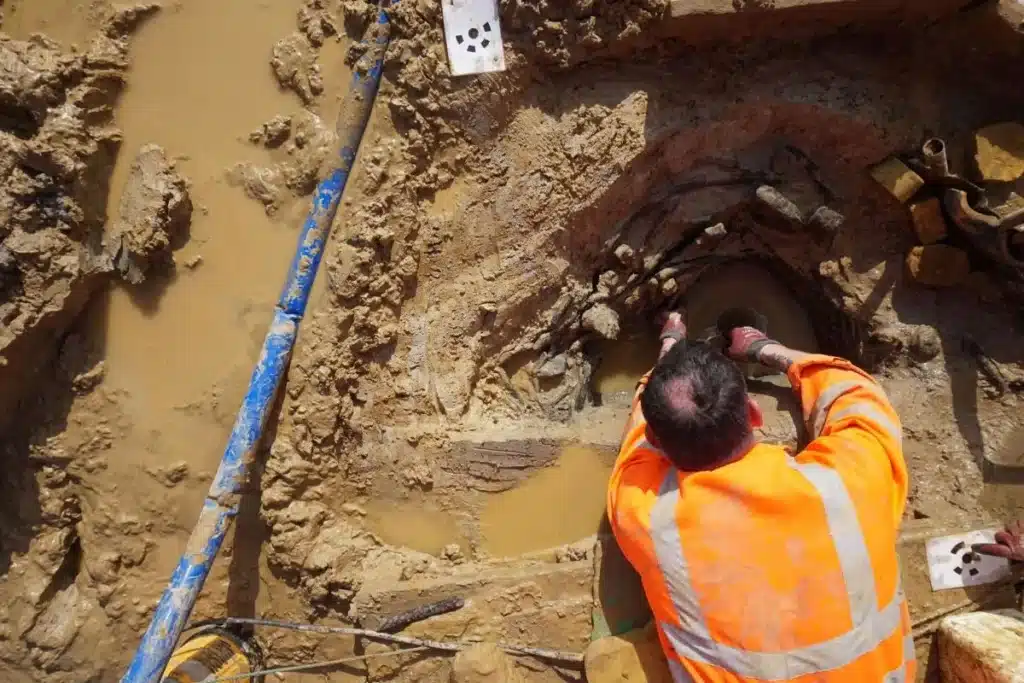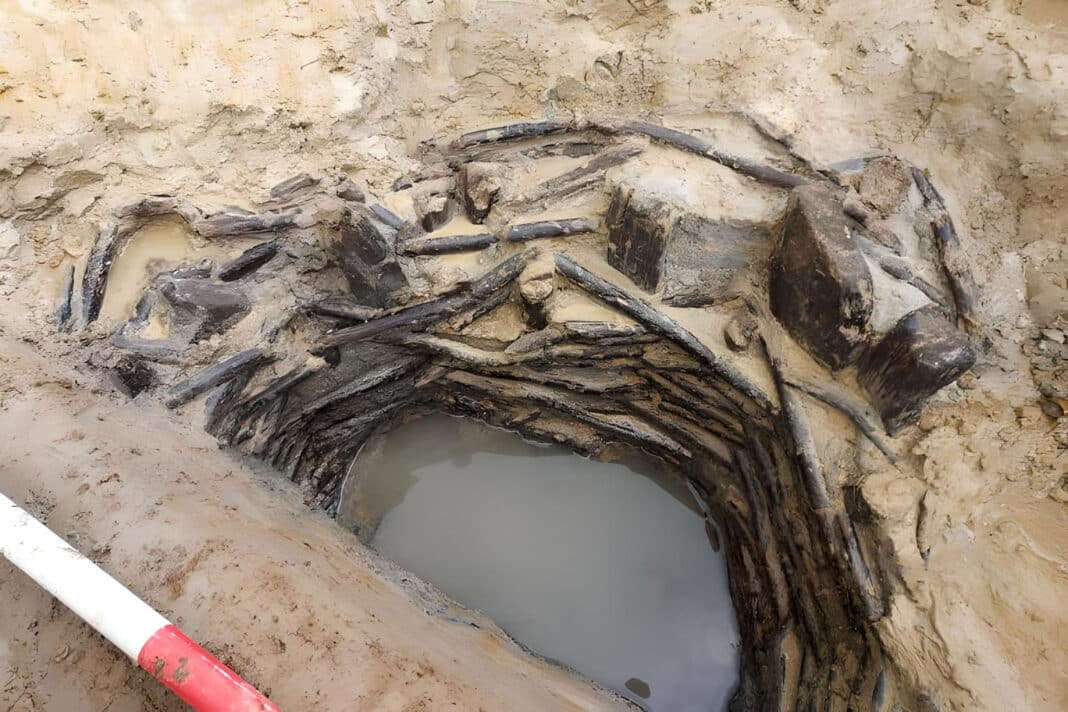Submerged wooden structures can survive thousands of years, with global archaeologists uncovering “rare” and “well-preserved” timber objects dating back to the Bronze Age and even the Stone Age.
The latest find, “a wooden well,” dates back to the later days of the Bronze Age, 1200 to 700 BC, and was made by archaeologists in Oxfordshire, UK. It came after scientists uncovered wooden instruments in Africa and Australia dating back to 476,000 years.
According to John Boothroyd from Oxford Archaeology, soil-bound to waterlogged timber acts as a natural form of preservation or treatment that prevents the material from decaying quickly.
“(While) preservation of wooden structures from this period is rare, the remains have survived all this time due to being buried in waterlogged ground,” Mr Boothroyd said overnight.
Wood Central understands that the first sign of the well came after the archaeology team uncovered a wooden post driven vertically into the ground, leading to the “wattle-like” well discovery. After digitally recording the remains, the team sent samples to the lab to determine the wood species.
Removing the wood required a delicate excavation process. The wood remained waterlogged throughout the removal process, eliminating the risk of the timber splitting, twisting, shrinking, or even disintegrating during the removal.
“Despite the challenging conditions, the team was able to expose and fully record the well in the ground,” Mr Boothroyd said, adding that “specialist soil samples were collected (at the site) also help establish what the surrounding landscape would have been like, and the intensity to which it was settled when the well was actively being used.”

According to Oxfordshire Councillor Judy Roberts, the site is a treasure trove for archaeologists looking for historic remains from the Bronze Age:
“The finding gives fantastic insights into the area’s past land use. It is thought the well may have been used for agricultural irrigation purposes for settlements nearby.” Before adding that “archaeological surveys (like this) are an important part of the process of delivering construction schemes. They help us identify and understand past residents of the area and record them for future generations.”
How Does Wood Survive Underground For Thousands of Years?
“Normally, when the wood is buried, it decays rapidly,” according to Historic England; “however, if the burial is very wet, it can be preserved for centuries.”
And whilst bacteria and fungi still degrade the wood, “when oxygen is limited – under wet or in waterlogged conditions – this process is much slower than in the air or a well-aerated soil.”

“The organisms that live on the wood and digest it leave cavities and tunnels behind, and these voids within the wood cell structure then become filled with water from the surrounding environment,” Historic England said, “hence the term ‘waterlogged wood’.” Therefore, “the water helps to preserve not only the overall shape of the wood but also the fine details, including tool markings and carvings.”
- To learn more about wood protection, visit Wood Central’s dedicated preservation website.







